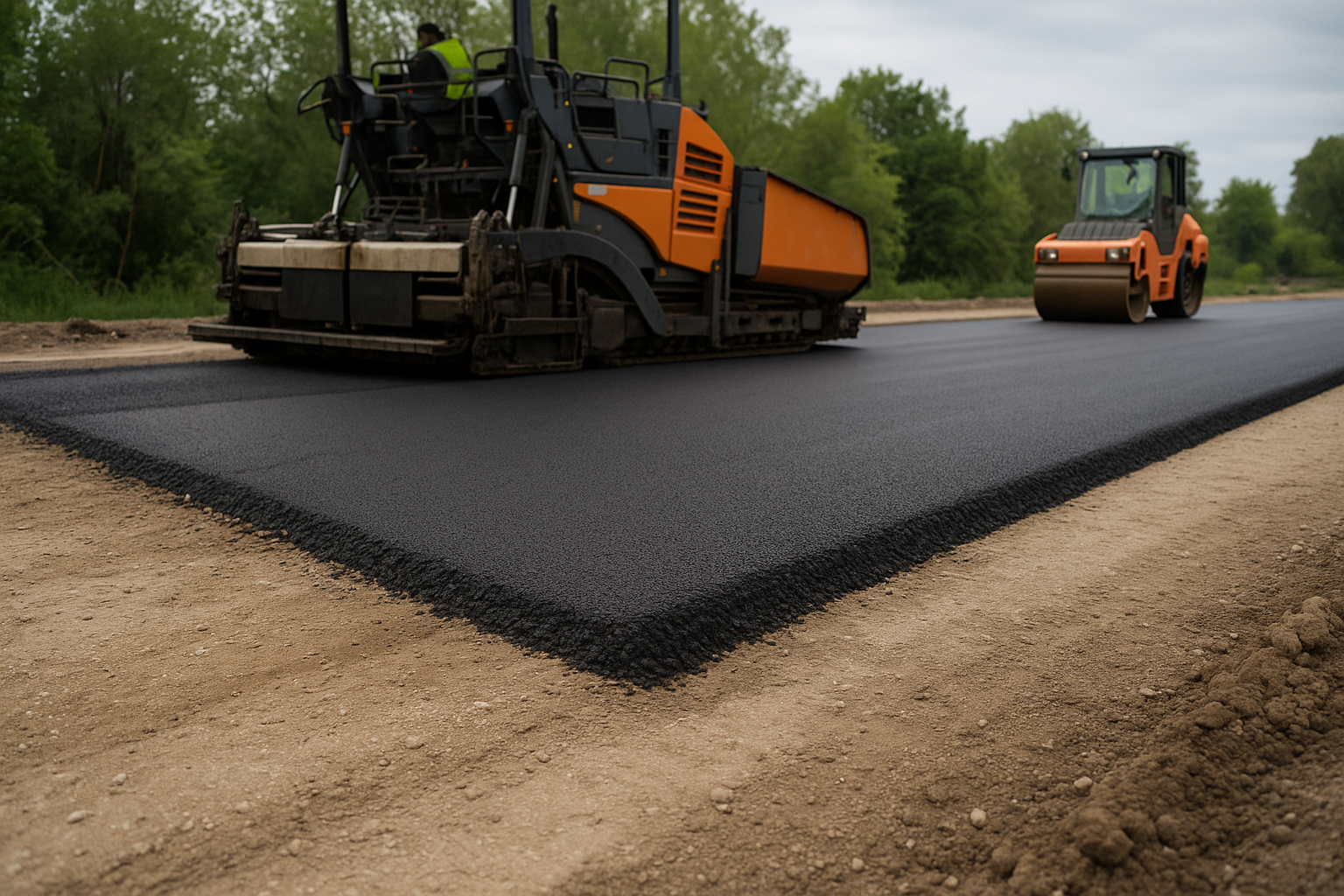Choosing the Right Asphalt Solutions for Durable Surfaces
The Basics of Asphalt Selection
Making the right choice for your paved surfaces often starts with understanding the immense impact asphalt solutions can have on both functionality and appearance. Whether the project involves a municipal road, commercial property, or even a large retail complex, it’s much more than an aesthetic decision. Asphalt’s ability to withstand heavy use, fluctuating weather conditions, and the daily pressures of traffic all depend on selecting the proper type for the job. These decisions lay the groundwork for durability, cost, safety, and maintenance needs down the line.
For example, if you’re considering a project similar to parking lot paving La Porte, IN, the underlying choice of asphalt determines how well the surface will manage Indiana’s changing weather, traffic flow, and potential for rapid freeze-thaw cycles. This upfront consideration saves headaches and money later. Building experts agree that considering variables unique to your region, like annual rainfall and soil stability, helps prevent surface degradation and premature repairs. For more in-depth information on selecting the correct materials and understanding pavement needs before beginning your project, the Federal Highway Administration’s asphalt technology page is a reputable source of independent advice and technical insight.
Understanding Project Needs: Traffic, Climate, and Use
Each asphalt project presents its own unique challenges and demands. A bustling commercial parking lot may see heavy delivery trucks daily, while a residential driveway primarily endures lighter vehicle traffic. These contrasting needs require careful selection of both the asphalt aggregate and the binder—small adjustments in these choices greatly affect lifespan and durability. For instance, lighter-duty driveways can tolerate less robust mixtures, while heavy-use parking areas need reinforced designs and denser compaction.
Local climate conditions remain a top concern. In regions exposed to hot summers, asphalt mixes formulated to retain structural strength in high temperatures are a must to prevent softening and rutting. Conversely, areas faced with frigid winters need flexible mixes that tolerate expansion and contraction from freeze-thaw cycles. Early in the design stage, a thorough evaluation of weather, expected vehicle load, and surface function ensures the solution performs over time, reducing the risk of costly overhauls or reconstruction.
Modern Materials and Techniques
The world of asphalt isn’t standing still. Today, the menu of available solutions features a range of modern options designed to enhance performance and sustainability. Recycled materials, such as recycled asphalt pavement (RAP), are regularly incorporated into new surfaces. These eco-friendly alternatives lessen environmental impact, lower raw material costs, and, with advanced processing, often match or exceed the performance of traditional asphalt.
The latest technology allows contractors to specify high-tech binders, add polymers for strength, and even include additives that promote flexibility under stress. Stormwater management has also advanced with permeable asphalt surfaces that enable water to soak through the pavement, drastically cutting down on runoff and reducing urban flooding. According to the National Asphalt Pavement Association’s industry news, fresh innovations like reflective coatings are gaining traction, helping cities and large facilities reduce the urban heat island effect and improve energy efficiency. As sustainability and long-term performance become bigger priorities, these evolving technologies will play a larger role in both public and private paving projects.
Site Preparation: Setting the Foundation for Success
Laying the groundwork for a successful project is just as essential as the choice of material. Proper site preparation starts with careful grading, removal of organic debris, and establishment of effective drainage systems to prevent erosion or water pooling under the pavement. A misstep in these early steps often manifests later as surface cracking, potholes, or rutting—problems that usually involve expensive fixes.
After clearing the site, contractors typically compact the sub-base using heavy equipment. This not only strengthens the ground beneath the pavement but also prevents shifting due to soil instability or freezing and thawing, which can be severe in certain climates. Real-life examples from across the U.S. demonstrate that projects with careful sub-base preparation outlast those where cost-cutting has occurred. The lesson is straightforward: solid groundwork today pays off in reliability and cost savings over decades.
Installation Best Practices for Long-Lasting Results
- Consult with a professional who understands the project’s intended use and local climate demands to specify the appropriate asphalt mix.
- Ensure the mixture is compacted while hot, at recommended temperatures, to promote particle interlocking and achieve a dense, stable surface.
- Check the finished pavement thickness and density at various points to guarantee uniformity, which prevents weak spots from developing.
- Respect the required curing time before opening the area to vehicle or foot traffic, which helps avoid surface marking and premature wear.
These technical best practices separate a job well done from a mediocre effort. The expertise and attention to detail brought by professional installers directly influence the surface quality and how long it remains free from defects. Statistical evidence from large infrastructure projects routinely shows that following these established standards increases both the initial satisfaction and the long-term value of paved surfaces.
Maintaining Asphalt Surfaces for Maximum Value
Installing a quality asphalt surface marks the beginning, not the end, of a successful pavement journey. Value-conscious owners and managers understand that routine maintenance is essential for longevity. Scheduled inspections every season ensure timely detection of damaged areas, while periodic sealcoating shields the top layer from oxidizing sunlight, rain, and road salts that can degrade binders.
Filling cracks as soon as they appear keeps water from infiltrating and destabilizing the base layer, a leading cause of potholes and surface deformation. According to industry studies, investments in ongoing maintenance—rather than waiting for visible deterioration—save between 30% 50% over the life of a pavement by avoiding large-scale repairs and surface replacement. Systematic care keeps surfaces safer for pedestrians and drivers alike.
Sustainable and Eco-Friendly Asphalt Options
As public awareness about sustainability grows, choosing green paving solutions has become preferable and often required for larger projects. Using high percentages of recycled asphalt pavement diverts waste from landfills and shrinks the overall carbon footprint. Plus, recycled mixes bring cost benefits and, in many cases, match or beat the durability of newly quarried materials.
Recent breakthroughs in chemical additives and cold-mix technologies further cut emissions and eliminate the need for energy-intensive processing. Cities and commercial developers are also specifying lighter-colored, reflective asphalts to reduce urban temperature spikes and combat heat waves. As a result, modern asphalt is more versatile, efficient, and beneficial for the environment than ever before.
Budgeting and Working with Professionals
Getting the best value from your asphalt investment goes beyond shopping for the lowest sticker price. Wise property owners solicit bids from several established contractors, checking for references and ensuring that proposed material mixes and installation approaches fit the project objectives. It’s worth discussing warranty terms and aftercare services so your investment is protected in the long run.
Transparent communication and a willingness to explain every step of the process help foster trust and set the tone for a successful project. Prioritizing quality over mere price often makes a dramatic difference in future maintenance needs and the true total cost of the paved surface.
Frequently Asked Questions About Asphalt Solutions
- How long can a new asphalt surface last? If well installed and properly maintained, many asphalt surfaces function effectively for 15 to 25 years, with some high-quality projects exceeding expectations depending on climate and usage.
- What weather concerns should I be aware of? Regions with significant freeze-thaw cycles can experience more cracks and potholes, while extreme heat may soften the surface. Using appropriate mix designs and proactive drainage installation mitigates these problems.
- Does recycled asphalt perform as well as new material? Research conducted in recent years shows that recycled and reclaimed asphalt can equal, or even outperform, conventional mixes when processed and installed to current standards.
- How should I vet potential contractors? Request references, ask for portfolio examples relevant to your location and intended use, and obtain clear, itemized quotes that include warranty information and a detailed project timeline.
FOLLOW US ON FACEBOOK
RECENT POSTS
TAGS
About The Memory Hole
You've reached TheMemoryHole.org! A diverse lifestyle blog with content on a variety of different topics to help you define and live the life you want to live! Thanks for stopping by!
Copyright © The Memory Hole. All rights reserved.








